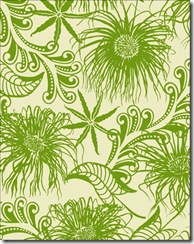the many fabrics of our lives…..
As the weather has gotten colder these last couple of weeks, I have begun the layering ritual. Undergarments, camisole, shirt, sweater, vest… some days even a jacket. Each garment is usually made from a different type of fabric. Each having their own inherent texture and appeal. As an interior designer, I am in contact with fabric everyday on my job. Whether I am specifying fabric for upholstered pieces, draperies, pillows, or custom bedding; I get to select from a wealth of fabrics that are available. For me, anticipating going to the fabric showroom to make selections for a client is like a kid waiting for their parent to drive them to the candy store. Once I am there, I am in my own special world. One of my favorite fabric houses is Zimman’s located in downtown Lynn, MA. (www.zimmans.com) One must have an idea of what one is seeking prior to entering this institution. It can be a bit overwhelming even to a trained expert! The fabrics, trims and embellishments are on the first floor and the lower level; the second and third floors are home to amazing furnishings and light fixtures.
Since I began offering my clients “green alternatives” in the realm of interior design products, my quest to find eco-friendly and organic fabrics that have more visual interest than a burlap bag has been a steady source of internet searching. Fortunately, access to these fabrics is becoming less of a search effort and more of clicking on a book marked site for a clients’ request. Here is some of what I have learned about the availability of eco-friendly fabrics.
What makes a fabric eco-friendly?
- It may be a natural fiber like cotton, hemp or bamboo. They must have been grown without the use of pesticides in the soil for at least three years.
- If the fabric is dyed, it must be with a low-impact dye.
- Eco-friendly certification (EU-Eco label certification)
- Production adheres to fair trade practices.
- Recycled plastic is also considered to be a green fabric.
Are there enough benefits to using eco-friendly fabrics?
Organic Cotton
Benefits: Renewable, biodegradable, non-toxic, comfortable
Potential Drawbacks: often more expensive than regular cotton
Hemp
Benefits: Renewable, fast-growing, pesticide free
Potential Drawbacks: Must be imported into the United States
Bamboo
Benefits: Fast-growing, minimal pesticide usage
Potential Drawbacks: Can be expensive, imported, requires chemical bleaching
Organic Wool
Benefits: Biodegradable, renewable, warm when wet
Potential Drawbacks: Can be expensive and hard to find
Recycled Polyester
Benefits: Lowers demand for oil, less waste, warm when wet
Potential Drawbacks: Sometimes expensive; inefficient methods for obtaining quality fibers
TENCEL®/ Lyocell
Benefits: Biodegradable, comfortable, rich color, stronger than cotton
Potential Drawbacks: Chemical processing required
Soy Fiber
Benefits: Renewable, biodegradable, soft, durable
Potential Drawbacks: Usually more expensive, chemical processing required
Jute
Benefits: Biodegradable, recyclable, fast growing, versatile
Potential Drawbacks: Rough and coarse good for rugs and bags, but not clothing
Modal
Benefits: Biodegradable, rich color, very soft and absorbent
Potential Drawbacks: Requires chemical processing
(The above information provided by The Sierra Trading Post)
Here are some web-sites that I would recommend for eco-friendly fabrics:
www.oliveiratextiles.com/collection.html?id=4
And, of course, I can not neglect to mention organic/eco-friendly fabrics without referring to www.etsy.com. I found at least 10 vendors that have beautiful and affordable lines to offer. If you find yourself unsure where to look for eco-friendly fabrics, please feel free to email ([email protected] ) or call me (978-335-1140) I would be happy to assist you.




Hi Lisa,
Very interesting!
Leslie
Lisa, thank you very much for the mention of Oliveira Textiles.
I absolutely love your post and the clarity of information. It’s so refreshing to see an interior designer really making the effort to source sustainable textiles.
Those of us who are manufacuring with green prinicples as priority really need everyone in the chain on board. So, here’s to your efforts!!
Cheers
Dawn Oliveira
http://www.oliveiratextiles.com
ps-RISD event on 10/22 I have been invited to join the panel:
http://www.treehugger.com/files/2009/10/register-for-the-symposium-on-design-and-industry-in-the-age-of-sustainability-today.php